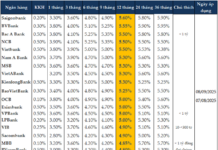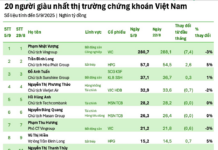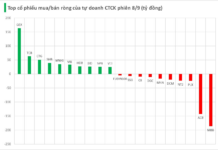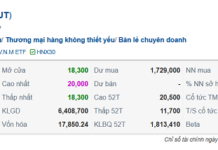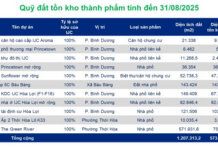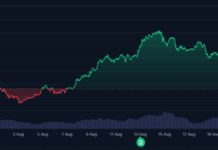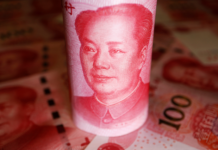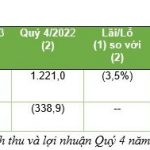
A positive picture of bank profits in the first half of 2024. Illustration: DNCC. |
The ‘armor’ is thinning
After the preliminary profit reports from commercial banks in the first half of the year, there are new noteworthy signals about non-performing loans, especially as the deadline for the application of Circular 02, which allows debt restructuring, is approaching the end of its validity period this year.
According to statistics from Maybank Securities Company (MSVN) at 17 listed banks, total provisioning expenses increased by only 11% in the first six months, equivalent to a provisioning rate of 1.27%. Mr. Quan Trong Thanh, Director of MSVN’s Analytics Block, considered this figure “disproportionate” compared to the 22% year-on-year increase in non-performing loans.
“Many banks have decided to relax provisioning and use loan loss provisions that banks have accumulated in previous years to manage their profit growth,” Mr. Thanh commented. This group of 17 banks reported a 22% growth in pre-tax profits, higher than the 16% expected by the research team.
Meanwhile, another notable figure is the continued downward trend of the loan loss coverage ratio (LLCR) this quarter (down to 83% from 85% in the first quarter of 2024 and 94% in the fourth quarter of 2023). This indicator is considered a “risk buffer” for banks, a layer of “armor” for banks to prevent non-performing loans, while it can be reversed when debt recovery is successful.
The downward trend of this indicator is taking place after credit institutions increased provisioning in the previous phase. “This means that the banking system is more vulnerable at the end of this year compared to its previous position,” Mr. Thanh assessed.
Similarly, according to Ms. Do Minh Trang, Director of Analysis of ACBS Securities Company, the provisioning buffer is generally sufficient to cover almost all non-performing loans, but has not yet covered restructured loans, which are potentially becoming bad debts.
“The extension of the debt restructuring period until the end of 2024 may help ease the pressure on asset quality for banks, but it does not reduce the pressure on provisioning for restructured loans until the end of 2024,” Ms. Trang commented.
Another notable issue in the trend of thinning buffers is the clear differentiation among banks. While the state-owned bank group has a high coverage ratio, the picture at commercial banks is much more complex, with most of them decreasing. This implies that at the end of the year, banks with low buffers will face greater provisioning pressure.

A positive picture of bank profits in the first half of 2024. Illustration: DNCC. |
Still waiting for recovery
Provisioning is one of the options for handling bad debts, along with the sale of collateral assets. Banks are also stepping up debt recovery efforts in this period, but it is generally assessed to be challenging.
At a recent seminar on non-performing loans, Mr. Do Giang Nam, Head of the VNBA Debt Settlement Club and a member of the Members’ Council of the Vietnam Asset Management Company (VAMC), pointed out that the context of weak market liquidity and many liquidated assets being discounted multiple times without finding buyers.
The recovery of the real estate market has not been as expected, which is also an important point to note. Not only for existing non-performing loans that have not been sold, but also for potential non-performing loans that are at risk of increasing rapidly even though Circular 02 has been extended until the end of 2024, instead of ending in the second quarter as previously planned.
Mr. Nguyen Quoc Hung, Secretary-General of the Vietnam Bankers Association (VNBA), said that the industry’s difficulties still lie in the handling of assets after Resolution 42 of the National Assembly issued in 2017 expired at the beginning of this year.
This is creating a “legal vacuum” in debt handling. Although the new provisions in the amended Law on Credit Institutions contain important adjustments, they also overlook many aspects that make debt handling more difficult. The VNBA is currently consolidating the opinions of banks to continue making proposals.
Meanwhile, the potential non-performing loans from Circular 02 are still an undefined risk, depending on the behavior of each bank. “If not properly supervised, it could amplify the risk in the banking sector when the Circular ends,” said Mr. Johannes Raschke, Senior Investment Officer, Distressed Asset Recovery Program (DARP) of the International Finance Corporation (IFC), commented to KTSG Online.
From the perspective of commercial banks, leaders shared that in the first six months, many customers “took advantage” of prepaying their debts quite a lot, while banks also stepped up debt recovery efforts. Most assessed that the market at the end of June started to show better signals than in the first quarter, even though the “war” on products and interest rates will continue to be intense.
Mr. Barry Weisblatt David, Director of the VNDirect Securities Company’s Analytics Division, said that the market will be supported by new real estate laws that will make it easier for banks to realize value from collateral assets. On the other hand, expected credit growth to reach its target, improved industry income along with a weak US dollar scenario, reducing pressure on interest rates, will be positive factors for the industry.
“Regarding banks, while acknowledging that asset quality has deteriorated recently, we believe that it will recover in the coming months as the Vietnamese economy improves,” VNDirect’s analytics representative commented.
Currently, many analysts still have positive assessments of the industry’s prospects, placing them in a scenario of credit growth reaching its target of about 15%, after a 6% increase in the first half of 2024.
The return of credit means an improvement in economic demand, but there is another equally important story, which is the real estate market, a field that also has many new regulations that are gradually being realized, but how much it can recover by the end of the year remains a big question. “It is very important for the banking industry that the economy in general recovers as expected, especially the real estate industry from the third quarter onwards,” Mr. Thanh of MSVN assessed.
Dung Nguyen
Bamboo Capital (BCG) surpasses 4,000 billion VND in revenue, reduces debt by 5,500 billion VND by 2023
The amount of debt to be paid has been reduced by more than 5,498 billion VND as the Group has actively settled all borrowings in order to lessen the cost of interest and ensure financial stability for the business.
Overcoming Challenges in Dealing with Bad Debts
In the newly passed Revised Securities Law, securities companies (SCs) no longer have the privilege to hold collateral. Therefore, SCs need to recognize that debt collection is their responsibility, and they should be extremely strict in assessing borrowers, ensuring compliance with principles, procedures, and conditions before granting loans.








